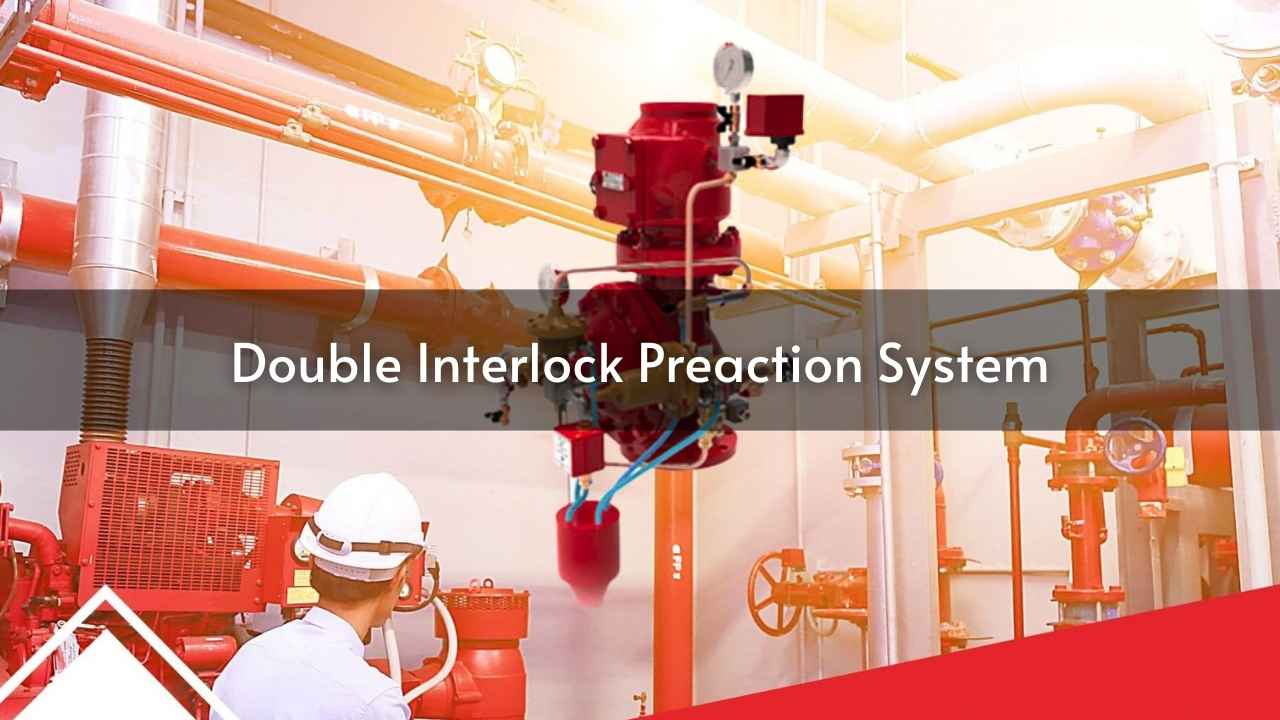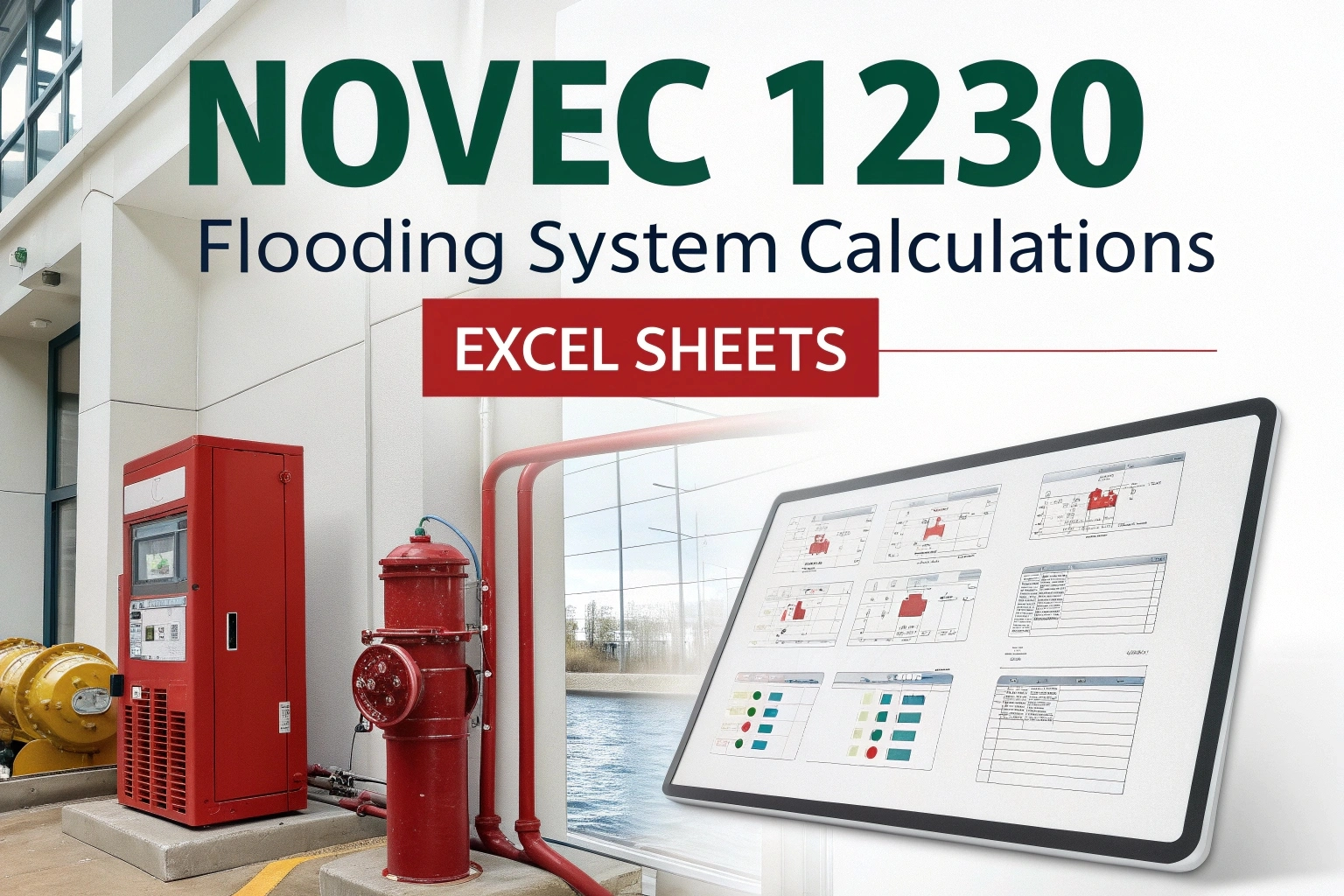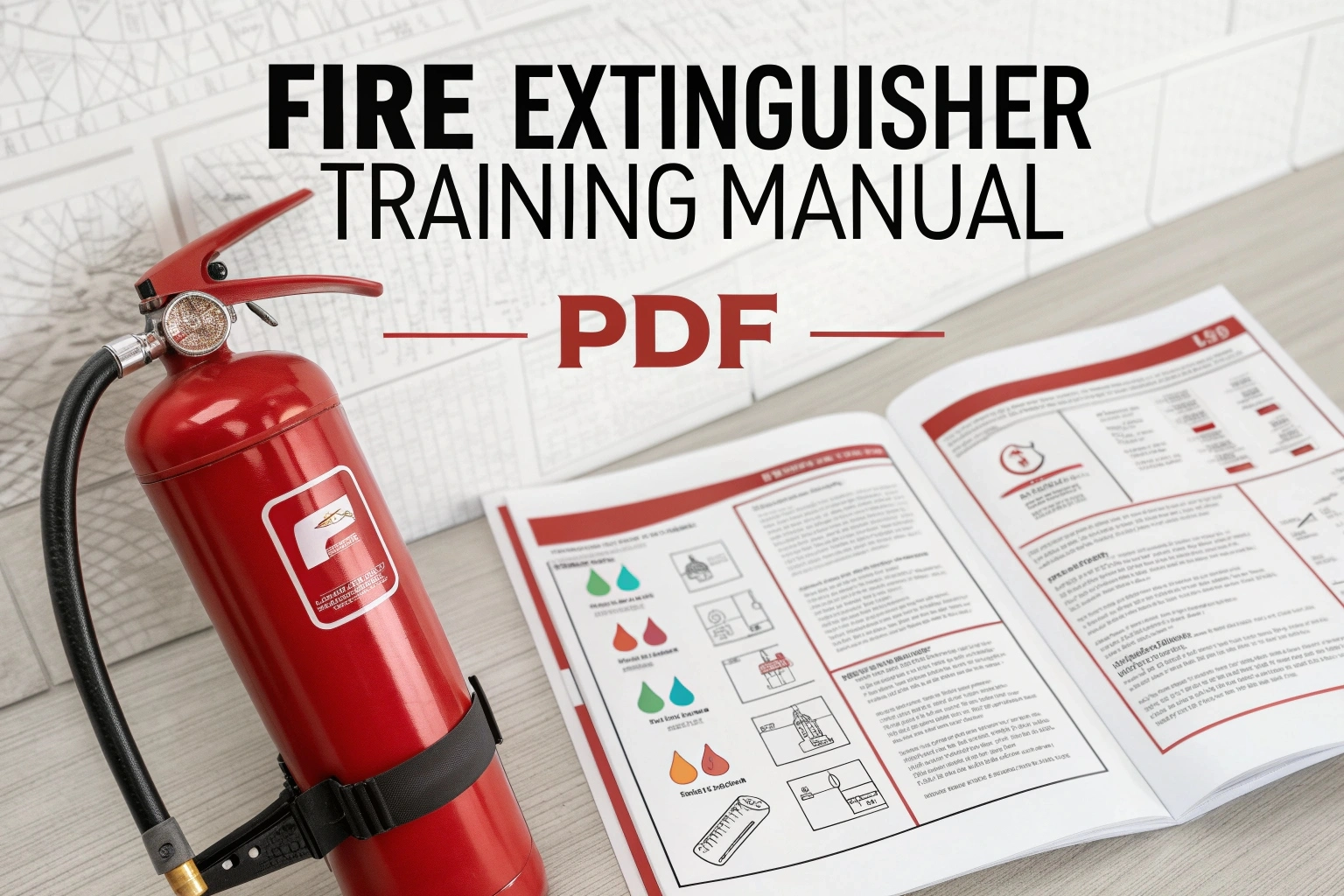The Double Interlock Preaction System is a complex system of fire protection since it minimizes the risk of false water discharge with effective extinguishing of the fires. Consequently, it becomes very important in sensitive electronic equipment locations, such as data centers, libraries, and communication rooms.
In this guide, we have taken into consideration how the Double Interlock Preaction System works, its components, and its benefits. This will help engineers and technical staff involved in firefighting and MEP (Mechanical, Electrical, and Plumbing) systems understand it better.
What is a Double Interlock Preaction System?
The Double Interlock Preaction System with Electric/Pneumatic Release protects areas that are sensitive to water, like computer rooms, storage areas, and refrigerated spaces. It prevents water damage that can happen if the sprinkler system accidentally floods. Under normal conditions, the system does not hold water in the sprinkler pipes. Instead, it uses air pressure to check for any leaks.
Key Components of the System
Understanding how the Double Interlock Preaction System works requires getting to know its primary components:
- Detection Devices: These are smoke or heat detectors that actually detect a fire.
- Control Panel: This panel receives the signals from the detection devices and manages the action by the system.
- Pressure Switch: This switch will trigger an alarm when the system has been activated.
- Manual Reset Actuator: This is the component which, by human effort, allows you to reset the system after an alarm.
- Diaphragm Valve: This valve is used to regulate the flow of water in such a way that it cannot enter into the system before it becomes active.
How the System Works
The Double Interlock Preaction System works in a series of steps:
- The detection devises recognize a fire and notify the control panel.
- The control panel opens the solenoid valve, and with it, a chance for air pressure to be released out of the system.
- Once the air pressure drops, the diaphragm valve opens, and water moves into the sprinkler pipes.
- The sprinkler heads pop open, and the water pours out to extinguish the fire.
This system wastes water only in confirmed fire cases and protects sensitive equipment from unwarranted water damage.
Advantages of Double Interlock Preaction System
The advantages of a Double Interlock Preaction System for fire protection include:
- Avoidance of Water Damage: The accidental water leakage from this machine is avoided by this system, thus not damaging expensive equipment.
- Improved Safety: It requires two independent events to be triggered and will have less chance of false alerts.
- Effective Fire Suppression: The system offers effective protection within areas where fires can be hazardous.
- Flexible Installation: This can be installed into any building, from a library to a data center.
Comparison with Single Interlock Systems
Compare the Double Interlock Preaction System with the Single Interlock System to see the advantage of the double interlock: what is most different is the number of steps required to activate the system.
One detection device in a Single Interlock System triggers the water flow into the pipes. This system can inadvertently open the water discharge if a device is activated by a non-fire event. Double Interlock System Two events have to occur before the water enters the pipes in this system. This makes it much less likely for the devices to open accidentally.
Applications of the Double Interlock Preaction System
The Double Interlock Preaction System works well in different settings, especially where water damage can cause serious problems. Here are some common uses:
- Data centers and server rooms
- Libraries and archives
- Art galleries and museums
- Telecommunication facilities
- Laboratories with sensitive equipment
Installation Considerations
When you install a Double Interlock Preaction System, keep the following factors in mind:
- Location: Identify all key locations for the system, particularly where sensitive equipment is kept.
- System design: Ensure that the system applied meets the particular demands of your facility in regards to configuration and form of equipment involved.
- Regular Maintenance: The system should be set up under regular maintenance so that when you need it most, it does not fail.
Conclusion
The Double Interlock Preaction System is an important fire protection tool. It protects sensitive areas, requiring two events to be activated, which lowers the chance of accidentally creating water damage while offering effective fire suppression. Therefore, engineers and technical staff who work in fire safety and management should understand how this system works, its parts, and its benefits. Using this system will provide an organization a great chance at improving their fire protection plans as an attempt to keep everyone safe while keeping the operations flowing.
FAQs
What is a double interlock pre-action system?
The double interlock pre-action system has two safety features. It has used a pre-action valve that controls the flow of water into the pipes of the sprinklers. Another feature is a fail-safe that prevents water from passing through the valve accidentally.
What are the different types of pre-action systems?
There are three types of preaction systems: non-interlock, single interlock, and double interlock. Among other differences, the main difference between pre-action systems and wet or dry pipe systems is that something specific must happen before water flows into the system.
How does a pre-action system work?
Pre-action fire sprinklers are dry systems, meaning they do not have water in the pipes. A pre-action valve holds back the water. This valve operates electrically and opens when it detects heat, smoke, or flames.
What is a single interlock pre-action sprinkler system?
A single interlock pre-action system works like a dry system. However, it requires a fire detection event, like a heat or smoke detector going off, before water can enter the system. The pre-action valve then opens to allow water into the pipes.
Read More – Deluge Sprinkler System: A Comprehensive Guide















